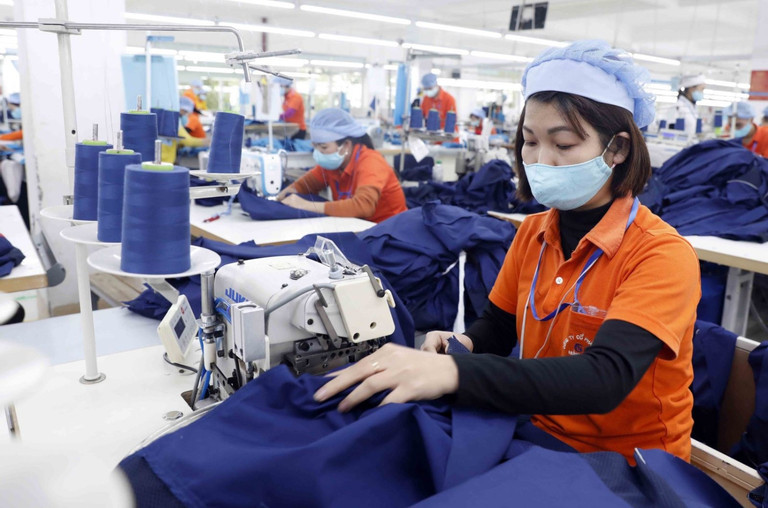
Many people may say that the departure of enterprises doesn’t matter, affirming that this is just ‘creative destruction’ which occurs in all market economies.
However, the high figure is worrying in Vietnam, because the ratio of businesses to the population in Vietnam remains modest, while the economy is developing with many opportunities opened and officially registered businesses creating many jobs.
A recent survey by Navigos Group showed that 82.2 percent of polled businesses said they have been adversely affected by market fluctuations in 2023 and 68 percent chose to downsize their staff.
Local newspapers reported that the number of workers ar a textile and garment enterprise fell from 4,000 to dozens after the company incurred a loss of tens of billions of dong because it did not get any orders. Another company reportedly closed hundreds of stores and laid off tens of thousands of workers since early 2023.
The Index of Industrial Production (IIP) in the first 11 months of 2023 moved up slightly by one percent compared with the same period last year (the figure was 8.4 percent in the first 11 months of 2022).
The statistics show the worrying conditions of Vietnam’s enterprises and partially reflect the problems of the national economy.
Among the reasons, analysts emphasized high production costs which are eroding the health and competitiveness of Vietnam’s enterprises.
First, the capital costs of Vietnamese enterprises are too high. Though lending interest rates have reduced recently, in the long term, the average interest rates in Vietnam are always several percentage points higher than those in other regional countries.
This is attributed to the high business risks in Vietnam. As capital costs are high, enterprises in industrial production that need huge capital can hardly create products competitive in the world market.
Second, transport and logistics costs in Vietnam are still high because of unsynchronized transport infrastructure and poor transport connections. The execution of large transport infrastructure projects has been going slowly because of many barriers.
Analysts warned that despite great efforts in upgrading the national transport infrastructure, including the building of the North-South Expressway and the upgrading of seaports, transport costs will still be high for many years, especially in the south.
High logistics costs weaken the competitiveness of Vietnam-made products and the capital accumulation of Vietnam’s economy in comparison with other regional countries. In the textile and garment sector, for example, Bangladesh has become very competitive because its products are cheaper thanks to lower labor costs.
Third, besides taxes, Vietnamese enterprises also have to pay additional fees and under-the-table fees, which pushes production costs up. Ministries, when compiling regulations, set many requirements on different kinds of fees and charges. The fees to ‘lubricate the apparatus’ is still a big problem.
Fourth, some kinds of fees are higher than the average levels in the region. Under current regulations, employers have had to pay social insurance premiums for workers and make contributions to funds, accounting for 17 percent of laborers’ annual salaries. If counting health insurance and other kinds of fees, the figure would be 32 percent.
Meanwhile, in Malaysia, enterprises have to pay social insurance premiums equal to 13 percent of workers’ salaries. The figures are 10-12 percent in Indonesia, 8 percent in the Philippines and 5 percent in Thailand.
Enterprises also complain about labor union fees, which puts a burden on enterprises in Vietnam.
The high costs lead to a reduction in the competitiveness of Vietnam’s economy, making it difficult to attract investments to generate jobs for millions of workers annually joining the labor market. This also poses challenges for Vietnamese enterprises who may lose orders to their competitors.
As a result, enterprises dare not make new investments, while many of them have had to cut the workforce. Many workers have lost their jobs and the majority of workers have taken simple work in the unofficial labor sector.
In Vietnam’s current economic structure, the foreign invested sector makes up 20.13 percent of GDP, 72 percent of total export value, and 50 percent of industrial output.
Lan Anh